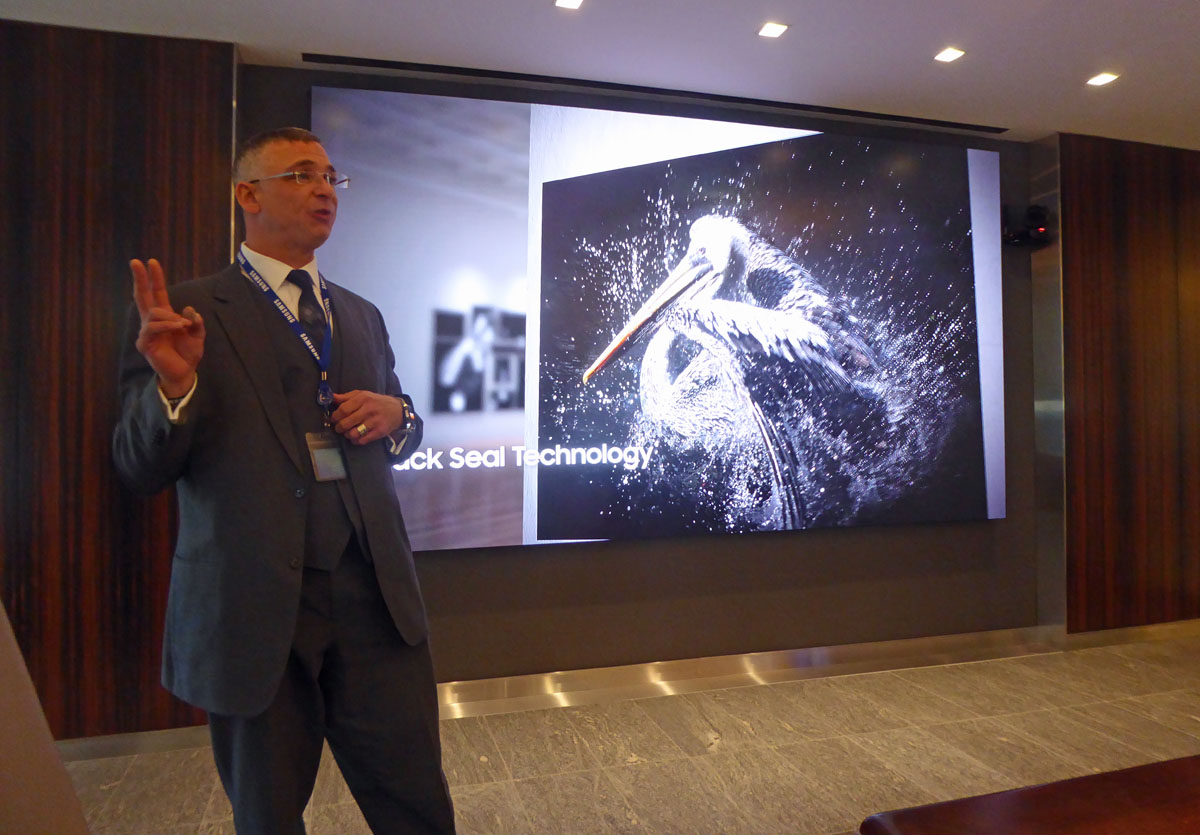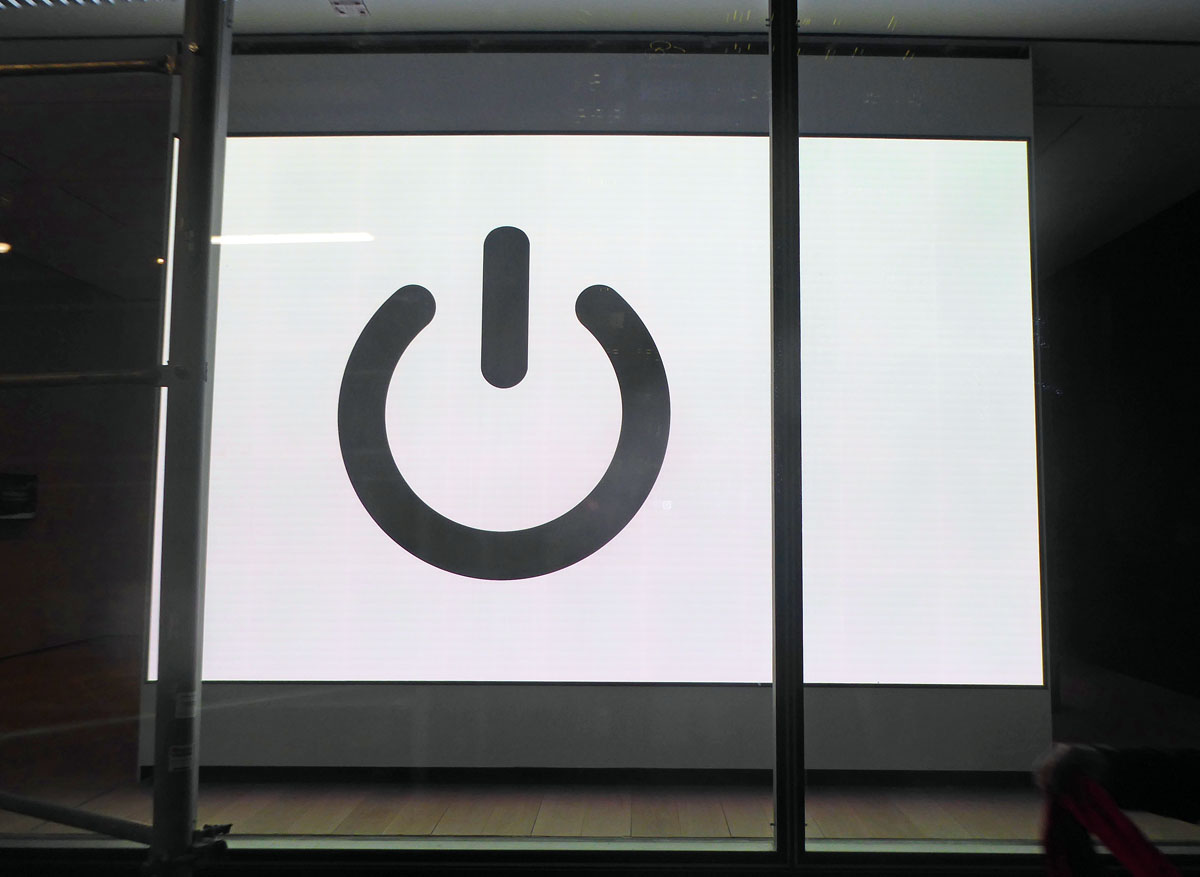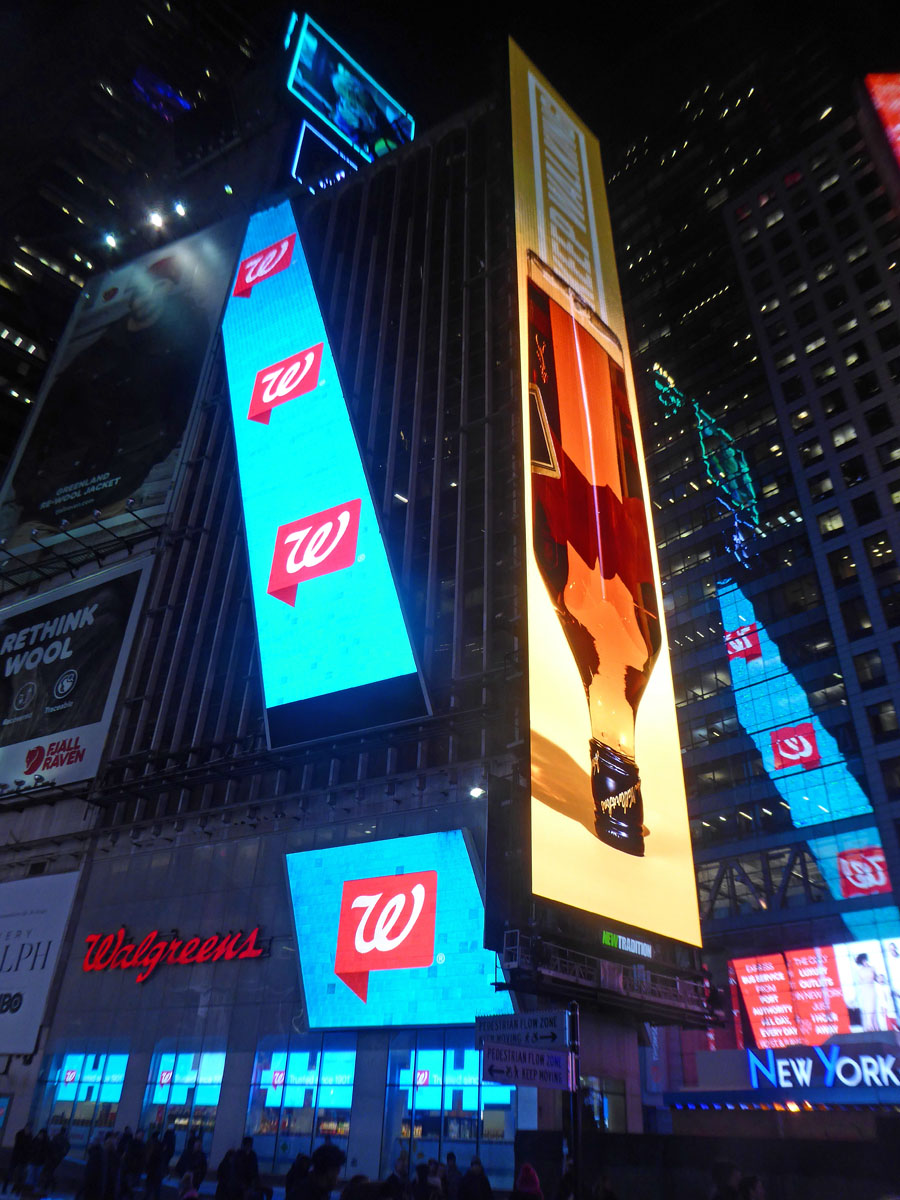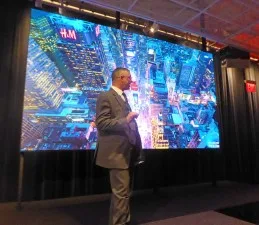A couple of weeks ago, I joined a group of trade journalists in New York City to get stuck in traffic in lower Manhattan. Just kidding! We were actually on a tour of several prominent Samsung LED wall installations around the city, although we did hit the usual bumper-to-bumper conditions in Midtown.

New York City (particularly around Times Square) is a hotbed for cutting-edge LED installations, both indoors and outdoors. Our guide was Joseph Viola, the senior vertical account manager for LED at Samsung. Also present was Don Sczcepaniak, president and CEO of Logan, Utah-based Prismview, a Samsung subsidiary. We were also assisted by staff from Samsung’s PR firm, including Erin Classen and Elizabeth Philbin, who were bombarded with questions about “pitch” and “nits.”
Our first stop was at commercial and residential real estate developer Fisher Brothers, a 104-year-old company with headquarters on Park Avenue. The company recently installed a Samsung 146-inch 4K (3840×2160) .84mm fine-pitch LED wall in its corporate boardroom, and it apparently gets quite the workout. Company executives use this display frequently to imagine, design, and modify architectural details from building exteriors to lobbies and even individual office and residential spaces.

According to managing partner Ken Fisher, commercial and residential clients are moving away from traditional lobbies with waterfalls and vegetation to something more high-tech, and videowalls are becoming part of the design solution to show everything from decorative artwork and video streams to promotions for company properties. (They could even be arranged in three-dimensional blocks to show virtual waterfalls, as has been done at NAB in the past.)
One popular application for this wall is to design and modify interior spaces with clients, employing software that can drop and move objects and render updates in real time. Fisher stated that the company opted for a 4K-resolution wall to capture all of the fine details involved in these architectural renderings. (He also added that it makes their PowerPoints look crisper, too!)
Our next stop was at the offices of Olgivy on 11th Avenue. This well-known advertising agency (now simply a “creative” agency) created a theater space near their entrance which can seat a few hundred people and has a long stage, backed up by a pair of 182-inch 1.5mm Samsung LED walls. Each 5×5 wall has a pixel resolution of 3200×1800 pixels and a peak luminance of 600 nits, which is quite bright in this darkened theater with black walls.
Ogilvy hosts numerous events in the space and also stages many Webcasts, using PTZ cameras. The building originally was a manufacturing facility, so there are some viewing obstructions created by large support pillars. The cameras and displays have been situated so that everyone can see at least one of the two screens, and when panels are seated in front of the screens, content is presented using a custom mask on the bottom of the screen so that no one blocks the displayed content.
The company is very much into high dynamic range and wide color gamuts for video and presentations, which is presumably why they opted to switch from using conventional high-brightness projectors to LED walls. The content loops we saw featured both, although a few of us spotted some contouring from insufficient bit depth in sampling and some frame rate errors during motion video. The original content in each case was mastered with HDR and at least 10 bits per pixel, so we suspected an issue with the content player and interface to the display. (The usual bugaboo is speed limitations with HDMI 2.0, but I could not confirm which interface was in use.)
After lunch, we visited the Museum of Modern Art, where we saw a couple of somewhat bizarre LED installations. The first one is seen as you enter the 53rd Street main lobby and sits way above your head, appearing to be a mostly white screen with occasional, random shifts in color. The piece is called “Echo” and was created by Phillipe Parreno, and apparently the shifts in color (which are slight) are influenced by its environment – most notably, by ambient sound collected by a moving array of microphones. The 10×5 screen measures 217 inches diagonally, uses 1.5mm elements, and needs every bit of its 800-nit peak luminance to overcome the high ambient light levels.

Around the corner, an even stranger exhibit (“Power”) employs a 190-inch 1.5mm wall to show the universal symbol for power on/off. The two elements – a partial circle and a vertical bar – appear separately and then blend into the final, recognizable symbol, all on a bright white background. This LED wall is situated so it faces 53rd Street at the window and is also rated at 800 nits peak luminance, which late in the day lights up a good part of the sidewalk and nearby street!
 Our final visit was (you guessed it) to Times Square, where we saw a couple of impressive LED installs by Primeview. The first, at One Times Square, features two 16mm wall segments at an angle. The upper segment measures 35.5’ (10.8m) x 50.3’ (15.3m) and the lower segment 52’ (15.8m) x 51’ (15.5m). On the north-facing side of the building, a single 8mm pitch screen with a resolution of 1312×7380 pixels takes up 35.5’ (10.8m) X 50.3’ (15.3m) worth of space and towers over the 42nd Street subway entrance and NYPD district HQ.
Our final visit was (you guessed it) to Times Square, where we saw a couple of impressive LED installs by Primeview. The first, at One Times Square, features two 16mm wall segments at an angle. The upper segment measures 35.5’ (10.8m) x 50.3’ (15.3m) and the lower segment 52’ (15.8m) x 51’ (15.5m). On the north-facing side of the building, a single 8mm pitch screen with a resolution of 1312×7380 pixels takes up 35.5’ (10.8m) X 50.3’ (15.3m) worth of space and towers over the 42nd Street subway entrance and NYPD district HQ.

At the other end of Times Square, Samsung has a spot in the center of a tall LED column. It measures 40.7’ (12.4m) x 63.6’ (19.39m) and has a pitch of 8mm for an effective resolution of 1792 x 2340. What’s unique about this wall is that it wraps around the sides, just like the screens on Samsung’s latest smartphones (something that wasn’t easy to see until we viewed it from the 57th floor of the W Hotel at 47th Street and Broadway).
All in all, an interesting (and chilly) trip. Samsung is definitely making its mark in the NYC LED world, particularly in Times Square (which, like Las Vegas, is the Super Bowl of LED displays). What surprised me more is how many worn-out LED signs are still running here – many had dead panels, stuck pixels, and lots of accumulated dirt, something that Sczcepaniak identified as a continual problem for outdoor LED displays and not easily solved unless some clever things are done with air pressure and seals. – PP

